Slip into a smoking jacket, pour yourself a glass of bourbon, light a cigar, and enjoy this post on 10 Ocean Species Every Man Should Love.
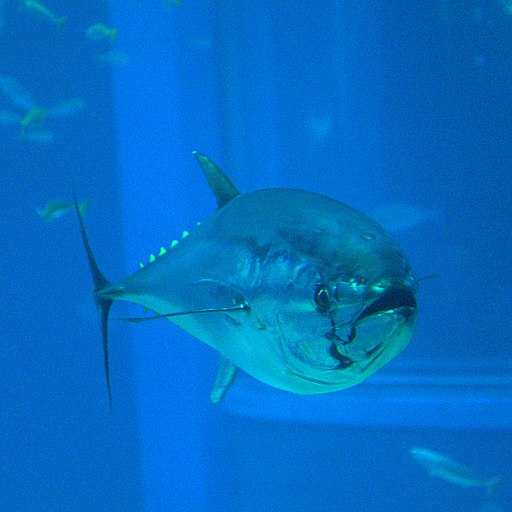 One of the rarest engines you can find in an early 70’s Dodge Charger is the 426 cubic inch Hemi V8. The 426’s asking price in 1970 was over $1200. Most buyers did not favor this expensive option. Besides buyers would need to save extra money for that sweet 8-track player. $1200 is also what you would pay recently for the brand new all-time record price tag for bluefin tuna ($736,700 for a 593lb individual). Relatively a small individual considering these predatory giants can reach near 10 feet in length and weigh almost 1000 pounds. Although unlike opting for the 426 Hemi in a 70 Dodge Charger, eating Pacific Bluefin Tuna (Thunnus orientalis) actually substantially decreases your manliness. Real men don’t eat species on the brink of extinction. Real men appreciate that Bluefin as the bad asses of the ocean; an ocean going Dodge Charger Hemified muscle car. Although most fish are cold-blooded, bluefins are hot rods, running hot, and regulating their body temperature up to 36 degrees above the water temperature. All that heat insures that the bluefin’s muscles can crank out power and speed like that rare 426 cu in Hemi V8 (which could hit 13.2 @ 108 mph in 1/4 mile). In 10-20 second sprints, bluefins can reach in excess of 30 miles per hour.
One of the rarest engines you can find in an early 70’s Dodge Charger is the 426 cubic inch Hemi V8. The 426’s asking price in 1970 was over $1200. Most buyers did not favor this expensive option. Besides buyers would need to save extra money for that sweet 8-track player. $1200 is also what you would pay recently for the brand new all-time record price tag for bluefin tuna ($736,700 for a 593lb individual). Relatively a small individual considering these predatory giants can reach near 10 feet in length and weigh almost 1000 pounds. Although unlike opting for the 426 Hemi in a 70 Dodge Charger, eating Pacific Bluefin Tuna (Thunnus orientalis) actually substantially decreases your manliness. Real men don’t eat species on the brink of extinction. Real men appreciate that Bluefin as the bad asses of the ocean; an ocean going Dodge Charger Hemified muscle car. Although most fish are cold-blooded, bluefins are hot rods, running hot, and regulating their body temperature up to 36 degrees above the water temperature. All that heat insures that the bluefin’s muscles can crank out power and speed like that rare 426 cu in Hemi V8 (which could hit 13.2 @ 108 mph in 1/4 mile). In 10-20 second sprints, bluefins can reach in excess of 30 miles per hour.
 From the 16th to 19th centuries, anyone on the high seas feared the 1,000 ton, 100 gunned, 3 mast sailing vessels referred to man-o-wars, likely referring to ship full of heavily armed soldiers. Nothing is manlier than seamen drinking grog, singing sea shanties, and firing off large guns. And nothing is manlier than a species named after an armed sailing ship. Enter the Portugese Man-O-War (Physalia physalis). However, it may better to think of this species as Borg mothership collective than a 16th century British warship. Each Portuguese Man-O-War is a colonial animal made up of individual zooids. Sure these ‘jellies’ may seem dainty but 1/3 the zooids are geared for shear killing, another 1/3 for eating, and another 1/3 for making love. The tentacles are individual defense zooids lined with specialized triggered, harpoon like, poison tipped, nematocysts. Nothing escapes including 10,000 people a year. These stinging nematocysts are so bad ass that tentacles long since dead and detached from the colony can still sting. Once a fish and damn near anything else encounters a defense zooid, the feeding zooids take over to dissolve the tasty treat. Man-O-Wars can consume up to 120 fish a day. And with a belly full of dissolved fish there is more than enough energy for the reproduction zooids to get busy. Colonies are either male or female and sperm and eggs are blasted out into the water every fall. You may ask how a Portuguese Man-O-War gets around. When you covered in 30-150 feet of tentacled badness you can simply float around like the bad ass you are. A float that sets on the surface catches the wind and lazily transports you around while you kill, eat, and …
From the 16th to 19th centuries, anyone on the high seas feared the 1,000 ton, 100 gunned, 3 mast sailing vessels referred to man-o-wars, likely referring to ship full of heavily armed soldiers. Nothing is manlier than seamen drinking grog, singing sea shanties, and firing off large guns. And nothing is manlier than a species named after an armed sailing ship. Enter the Portugese Man-O-War (Physalia physalis). However, it may better to think of this species as Borg mothership collective than a 16th century British warship. Each Portuguese Man-O-War is a colonial animal made up of individual zooids. Sure these ‘jellies’ may seem dainty but 1/3 the zooids are geared for shear killing, another 1/3 for eating, and another 1/3 for making love. The tentacles are individual defense zooids lined with specialized triggered, harpoon like, poison tipped, nematocysts. Nothing escapes including 10,000 people a year. These stinging nematocysts are so bad ass that tentacles long since dead and detached from the colony can still sting. Once a fish and damn near anything else encounters a defense zooid, the feeding zooids take over to dissolve the tasty treat. Man-O-Wars can consume up to 120 fish a day. And with a belly full of dissolved fish there is more than enough energy for the reproduction zooids to get busy. Colonies are either male or female and sperm and eggs are blasted out into the water every fall. You may ask how a Portuguese Man-O-War gets around. When you covered in 30-150 feet of tentacled badness you can simply float around like the bad ass you are. A float that sets on the surface catches the wind and lazily transports you around while you kill, eat, and …
 If a Portuguese Man-O-War is manly then any species immune to its venom and known to rip off its tentacles and use them for defensive purposes deserves a spot on this list. Number three on the list is the Blanket Octopus (Tremoctopus) An octopus named after a blanket may not sound manly, but you got to respect ladies when they are 100 times bigger than the dudes (over 6ft vs. a couple of inches). Blanket Octopuses are so called because of the webbing that exists between the arms of the females. Females ward off predators, forgoing ink , by billowing this webbing, making them appear larger than they are. As you savor that bourbon you may be pondering what the life of male Blanket Octopus is. Tiny males live only to reproduce. A detachable arm of the male is modified to store sperm. Once the arm detaches it crawls inside the female to fertilize the eggs. Nothing is manlier than losing a limb to pleasure and fertilize a sexual partner.
If a Portuguese Man-O-War is manly then any species immune to its venom and known to rip off its tentacles and use them for defensive purposes deserves a spot on this list. Number three on the list is the Blanket Octopus (Tremoctopus) An octopus named after a blanket may not sound manly, but you got to respect ladies when they are 100 times bigger than the dudes (over 6ft vs. a couple of inches). Blanket Octopuses are so called because of the webbing that exists between the arms of the females. Females ward off predators, forgoing ink , by billowing this webbing, making them appear larger than they are. As you savor that bourbon you may be pondering what the life of male Blanket Octopus is. Tiny males live only to reproduce. A detachable arm of the male is modified to store sperm. Once the arm detaches it crawls inside the female to fertilize the eggs. Nothing is manlier than losing a limb to pleasure and fertilize a sexual partner.
Clint Eastwood is the epitome of manliness. My dream day includes the two of us drinking bourbon, smoking cigars, and watching The Outlaw Josey Wales. At one of the most memorable moments in the film, Clint as Josey Wales states “Are you gonna pull those pistols or whistle Dixie?” Shortly after projectile shenanigans ensue. Like Josey, Pistol Shrimp (Family Alpheidae), are entering guns blazing. Pistol shrimp possess one extraordinarily large claw with specialized joint allowing the claw to be cocked. Once released the claw snaps creating a cavitation bubble capable of creating a sonic boom. That bubble reaches speeds of 60 mph and reaches 218 decibels. That Rage Against the Machine concert you attended a decade ago and still recovering from probably only reached 115 decibels. Pain starts at 125 decibels. This death bubble is more than sufficient to kill small fish and stun larger ones. The only thing that would make Pistol Shrimp manlier is calling them Clint Eastwood Shrimp.
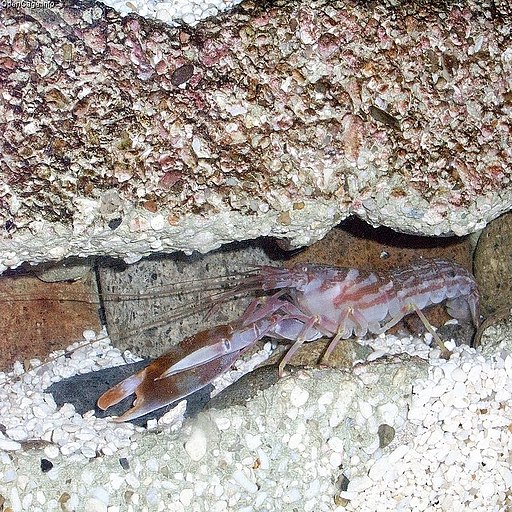
To round out the first five of our Ten Species Every Many Should Know is the Narwhal ( Monodon monoceros).
Wait…what? Did I just seriously put the unicorn on the sea on a manly ocean species list?
Hear me out.
 Motörhead’s Snaggletooth logo is one of the manliest if not the scariest logos of all time and representative of macho bikers everywhere. That skull with the horns coming out of the mouth still haunts my dreams. If you placed that wild boar-wolf-demon-skull creature in the ocean it is basically the Narwhal. In males, an incisor tooth on the left side of the upper jaw can helically grow up to 10 feet long, almost half the length of the whale. Darwin, one of the most manliest of scientist (both for changing all of science and the beard), actually argued that this is secondary sexual characteristic meant to woo females, like peacock feathers (but way more badass). Even more badass is the 2 in 1000 males that form two tusks and come much closer to the Snaggletooth logo. And if that isn’t enough, in a name likely to please Lemmy, the name Narwhal derives from the Old Norse word meaning corpse, in reference to the whales greyish skin, like that of a drowned sailor.
Motörhead’s Snaggletooth logo is one of the manliest if not the scariest logos of all time and representative of macho bikers everywhere. That skull with the horns coming out of the mouth still haunts my dreams. If you placed that wild boar-wolf-demon-skull creature in the ocean it is basically the Narwhal. In males, an incisor tooth on the left side of the upper jaw can helically grow up to 10 feet long, almost half the length of the whale. Darwin, one of the most manliest of scientist (both for changing all of science and the beard), actually argued that this is secondary sexual characteristic meant to woo females, like peacock feathers (but way more badass). Even more badass is the 2 in 1000 males that form two tusks and come much closer to the Snaggletooth logo. And if that isn’t enough, in a name likely to please Lemmy, the name Narwhal derives from the Old Norse word meaning corpse, in reference to the whales greyish skin, like that of a drowned sailor.

Feel like I’m missing a manly ocean species? Put them in the comments below and they may make it into the next five! Now enjoy some Ace of Spades


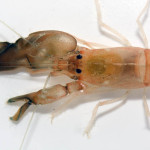
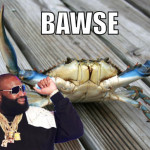
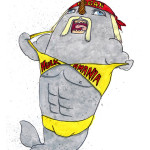

This post is nonsense! The sailfish is far manlier than the tuna. Faster, svelter, and much, much cooler looking.
You forgot a connection between the two: (wikiquote)
“The blanket octopus is immune to the venom of the Portuguese man o’ war and has been known to rip off the man o’ war’s tentacles and use them for defensive purposes.”
Perhaps you’re case can be made for inclusion in his part 2?
How about the mantis shrimp? Speed or power, take your pick.
I second that vote. Especially the ones that have a club. The blade is cool, but the club is A CLUB
I vote for isopods. They look like marine wood lice on steroids.
I love the lowly sea snail whose plight was so sensitively described by E. Forbes in Natural History of the European Seas.
As much as I’d like to say spiny dogfish, my real vote would probably have to go with the sand tiger. Should be on the list for the gnarly teeth alone, but they also eat each other in the frickin’ womb. In order to survive as long as being born they have to survive a battle to the death with upwards of a dozen other sharks. This was supposedly discovered by a scientist who was bitten by an unborn pup. They then spend the rest of their lives being huge and terrifying-looking.
Parrotfish… they sleep in a bubble of their own spit… Outstanding!
Hagfish… Ooze your daddy?
Csiromedusa medeopolis… ‘nuf said
Seahorse… a daddy pulling equal time
Violet Sea Snail… he’ll eat your man-o-war for breakfast
Halichoeres bivittatus… heh heh. I have ALWAYS wanted to use this fishy’s common name for a boat.
Incognito deadliness – manly and supremely handsome, and carrying weaponry that is superb; like Sean Connery as 007 (everybody since has been a mere pretender). In the marine animal world, my vote is for Conus geographus. It kills its prey with a wonderfully functional harpoon-like hypodermic tooth, and the LD50 of the venom to humans is anywhere from 1,000 to 10,000 times that of King Cobra venom. Whereas the King Cobra injects 10s to 100s of mg of venom, an individual of this Conus species can get you with a fraction of a microgram. Anecdotally it is called the “cigarette Cone” for the belief that if stung, you have just enough time to have a cigarette before you are forced to give up smoking permanently.
Like a WWF cage match in the womb!
Wonderful stuff here! I’ve shared it with a few others – my high school biology teacher would have loved to have this amount of detail to teach us! (54 years ago!) Thanks for the great post.
Sit back, swish that bourbon around and contemplate the deep red velvet of your smoking jacket. Now imagine its lining being covered with spikes and leather, ready to turn into a bike gang leader’s riding gear at your whim.
That would be cool, wouldn’t it?
Know then that the Vampyroteuthis Infernalis – The Vampire Squid from Hell, can do exactly that.
While certainly not the biggest cephalopod out there, this tough little critter lives in the deep sea, dealing with immense pressures and dim-to-non-existent lighting.
Taxonomically speaking, it’s neither squid nor octopus, but a more primal relative of both.
Spread between its arms is a thick membranous skin and lining the inside of each arm is a series of spiky protrusions. When alarmed, the Vampire Squid covers its body with this mantle, essentially switching itself inside-out, the manly, phallic spikes now jutting outwards toward any badass stupid enough to challenge our deep-sea friend.
This is one invertebrate I would not be happy to meet in an aphotic alley.
That was a pretty badass description!
submitted for your consideration :)
Spineless invertebrates, cuddly narwhales, dangerous? Make way for the unicells – I would like to nominate Pseudo-nitzschia pugens for the top ten species list. Pseudo-nitzschia produces domoic acid which contaminates shellfish, and causes amnesic shellfish poisoning (ASP). You may not even remember meeting this bad boy, if you survive. Symptoms include short-term memory loss, brain damage, coma and death. There’s no antidote. Reports of ASP-related madness in seabirds may have led Hitchcock to write the screenplay for his thriller ‘The Birds’.
I could try to write up my case, but I couldn’t do a better job than John Piatt did in the introduction for tufted puffins in the Birds of North America series.
“Tufted Puffins are cool. Unlike their familiar brethren—Horned (Fratercula corniculata) and Atlantic (F. arctica) puffins, whose appearances convey comic charm and innocence—Tufted Puffins exude stern confidence. With all-black body plumage, striking white robber’s mask, chunky orange bill, and streaming golden head-plumes, this is one member of the auk family whose appearance—like that of a biker in leather regalia—says, “Don’t mess with me!” Their status as seabird tough-guys is not unwarranted. Few other seabirds breed over such a vast geographic range and extreme of climatic regimes, from cactus-covered rocks in southern California to frozen cliffs of the coastal Alaskan Arctic. And few other seabirds range so widely at sea, from icy waters of the Chukchi Sea to the warm, subtropical expanse of the Central North Pacific Ocean, and east to west from the California Current to the Kuroshio Current of Japan.”
In short, tufted puffins and kicking butt and having fun.
Of course, my vote given the above options is for the blanket octopus, thanks to the line about pleasuring sexual partners.
“Nothing is manlier than losing a limb to pleasure and fertilize a sexual partner.”…
umm… hello??? anglerfish?? The male loses a bit more than a limb.